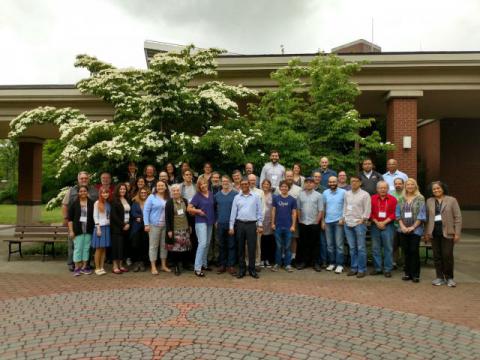Gene annotation and Reactome pathway curation jamboree in June 2017
Gramene encourages and supports researchers to learn how to annotate and format their data sets accurately for publication and deposition in the public repositories for its long-term utilization, re-use, re-analysis and interoperability. This past summer, Gramene, in collaboration with the NSF-funded Planteome project, the NIH-funded Reactome project, and the 2017 Gene Ontology Consortium meeting (June 1-5, 2017; Corvallis Oregon) co-organized a 2-day jamboree focused on gene annotation and pathway curation. On day 1, Dr. Chris Mungall (Lawrence Berkeley National Laboratory) and Dr. Laurel Cooper (Oregon State University; Planteome project) introduced participants to ontology concepts and annotation resources followed by a hands-on curation session on gene annotations using the Noctua tool. On day 2, Prof. Peter D’Eustachio (NYU School of Medicine; Reactome project) introduced participants to the data model used for pathways in the Reactome and Plant Reactome databases and demonstrated step-wise curation of a pathway using the Reactome curator tool. Dr. Sushma Naithani (Oregon State University; Gramene project) reviewed strategies and resources used for gathering data for curation beforehand, and led a hands-on curation exercise assisting participants on how to integrate and organize pathway data using the Reactome curator tool. Examples from both plant and non-plant model organisms were used for curation in both workshops. Strategies to involve scientific communities in gene and pathway curation were discussed.

- Sushma_Naithani's blog
- Log in to post comments
